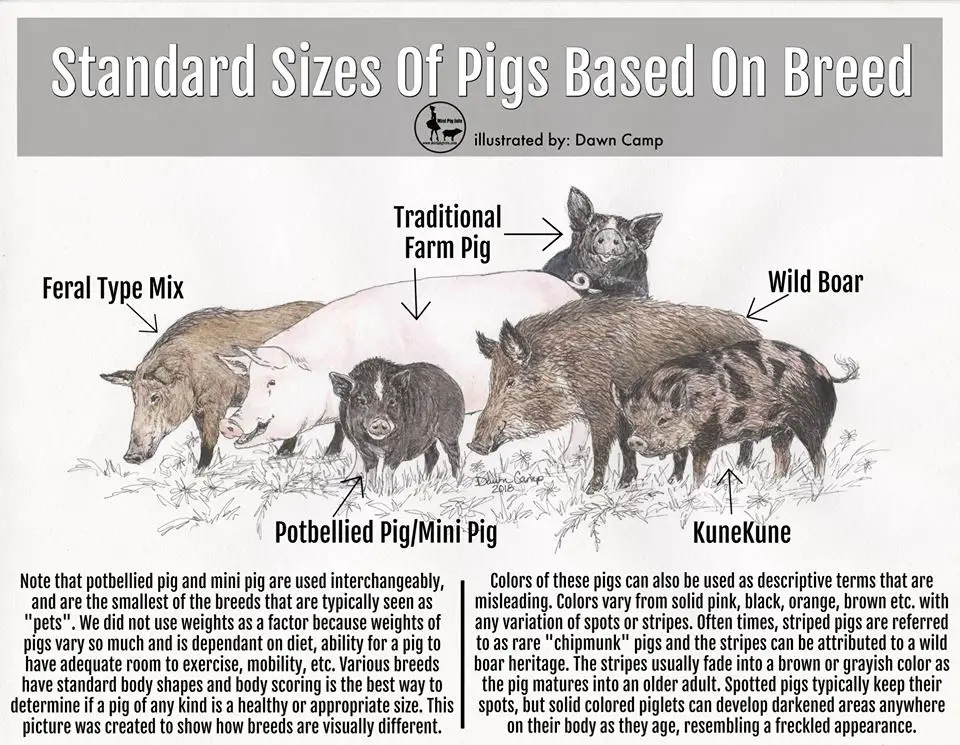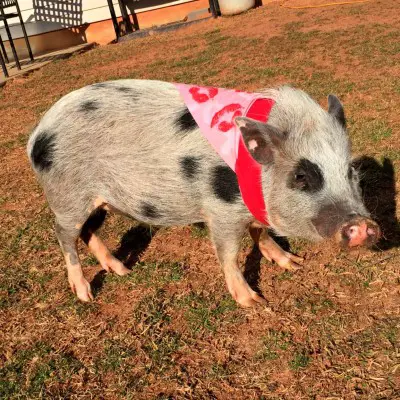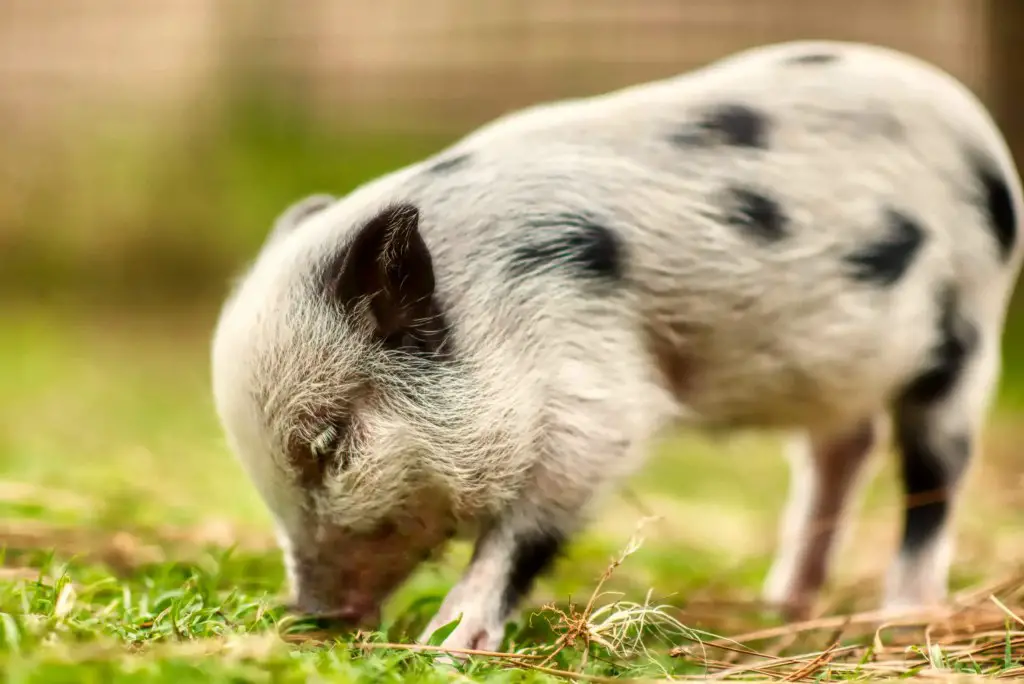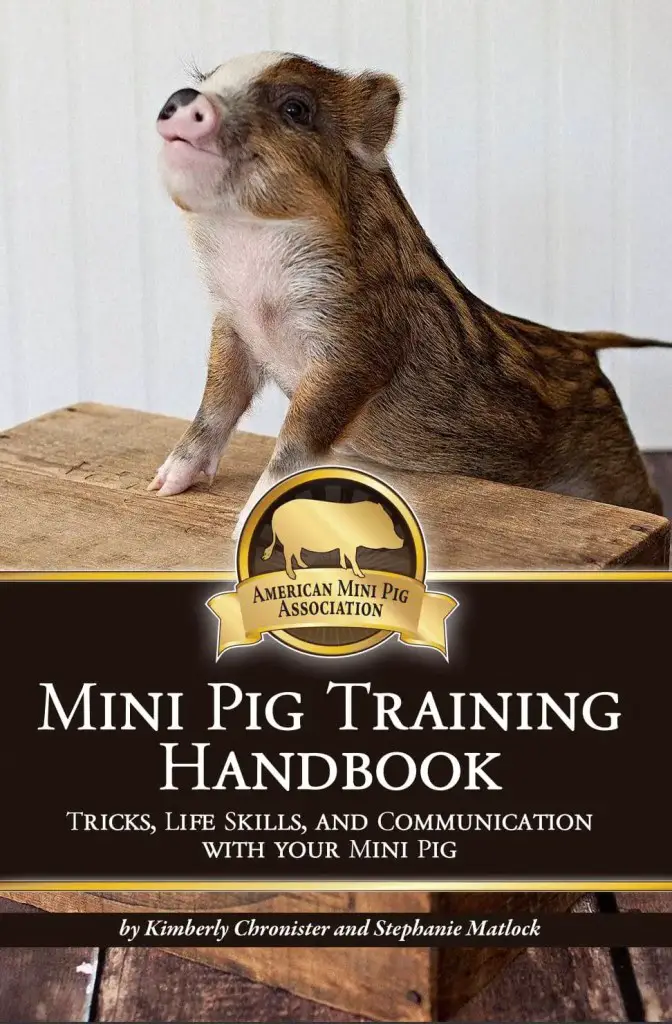The Juliana pig breed – vibrant, sociable, and intelligent – offers an intriguing delve into the world of unique swine breeds. Boasting a rich history that spans continents and centuries, Juliana pigs have established themselves as favorites among pig breeders and enthusiasts alike. Offering a host of endearing qualities both in their physical characteristics and temperament, these pigs hold a special charm that sets them apart in the broader pig breed spectrum.
Further enhancing their appeal is their adaptability, evident in their good health and expected lifespan, making them a popular choice for those seeking more unconventional pet choices. In this exploration, we shall embark on a journey through the fascinating history, unique physical traits, appealing behavior, and admirable health profile of the Juliana pig breed.

History of the Juliana Pig Breed
Origins of the Juliana Pig Breed
The Juliana Pig, also known as the Miniature Painted Pig, is a small pig breed that originated in Europe. The breed was initially formed in the 1960s and 1970s, when a group of European breeders started to selectively breed small-sized pigs. The breeders, primarily from Germany and Sweden, were interested in creating a pig breed that was distinct in its size, intelligence, and docile temperament.
First Appearance in America
The Juliana Pig made its way to America in the late 1980s, though there is little documentation on the exact timeline. Several breeders and enthusiasts started to import these small pigs, fascinated by their unique size and friendly demeanor. While Juliana Pigs were initially met with intrigue and novelty, their popularity grew significantly over the next couple of decades.
Popularity and Use in American Society
Through the late 1990s and early 2000s, the Juliana Pig’s popularity further increased in America. People began to value them not just as novelty pets but for their intelligent and friendly nature. The Juliana Pigs were easy to train, loyal, and made excellent companion animals, which contributed to the growth in their popularity.
Physical Characteristics and Traits of the Juliana Pig
Juliana Pigs are distinctively smaller in size compared to common domestic pig breeds, typically weighing between 30 to 50 pounds when fully grown. They have a slender build, with a pronounced and straight back. One defining characteristic is their spots – Juliana Pigs are often multi-colored or spotted, which adds to their appeal.
In terms of temperament, Juliana Pigs are known for their intelligence and social nature. They are capable of a range of emotions and interactions and can form strong bonds with their owners. They can be trained to perform various tasks and tricks, making them a popular choice for pet owners seeking an unusual and engaging pet.
About the Juliana Pig Breed and Breeding Standards
Over the years, the Juliana Pig breed has gained recognition due to its unique qualities and traits. To preserve the purity of this breed, the Juliana Breeders Association was established. The association enforces standards regarding the pig’s size, physical structure, and coloration. It is the duty of the Juliana Breeders Association to keep detailed records of the lineage and breeders, ensuring the protection and enhancement of the Juliana Pig Breed for future generations.
Physical Characteristics of the Juliana Pig Breed
Meet the Juliana Pig: A Graceful Miniature Breed
One look at the Juliana Pig Breed, and you may be surprised by their dainty stature. Standing out among the realm of miniature pigs, these particular swine have unique proportions that contribute to a delicate, refined appearance. Mature Juliana pigs typically weigh in at a modest 40 to 65 pounds and stand a humble 13 to 15 inches high at the shoulder, truly accentuating their petite physique.
Beyond their size, the spectrum of color variations within the Juliana pig breed is a notable aspect of their appeal. Light silver to deep black, their coats often showcase a fascinating mix of shades, creating a pleasant dappled or spotted look. Although a full spectrum of colors can be observed, pure white or solid black individuals are considered a rarity within the Juliana pig population.
The skin of a Juliana pig also contributes to their distinctiveness. Unlike other breeds with rougher skin, these pigs generally possess smooth, hair-covered skin that aids in shielding them from various weather extremities. Along with their hard, sturdy hooves, they are well-adapted to diverse climates.
The breed’s striking features don’t stop there. One of the defining characteristics of the Juliana pig breed is their erect ears, akin to a deer’s, adding a charming touch to their overall look. Their medium-length snout and straight tail perfectly balance out their small, compact body.
The architecture of their physique, with longer legs, a straight body line, and an even belly, differentiates the breed from other miniature breeds. Moving with unexpected grace and athleticism, their lithe build vividly comes to life as they actively explore their surroundings.

Behavior and Temperament of the Juliana Pig Breed
Juliana Pigs: A Noteworthy Blend of Intelligence and Sociability
The diminutive Juliana pigs, often referenced as miniature or teacup pigs, don’t just stop at being physically charming; they’re incredibly bright too. With their intelligence often being compared to that of dogs, these pigs are quick studies. Reports from numerous owners indicate that these pigs can be house-trained quite easily and respond well to commands, adding to their appeal as pets.
Their friendly disposition is also worth noting. Juliana pigs are generally peaceful creatures that tend to get along well with fellow animals, which makes them a great fit for households with other pets. They are social animals that seek out interaction and companionship, be it with humans or other animals. This amiable nature is a central factor in their ability to adapt to a range of living environments.
The Personality Traits of Juliana Pigs
Juliana pigs have a docile and affable demeanor. They have a playful side and it is not uncommon for them to enjoy participating in games and activities with their human companions. Sometimes, they can be a bit stubborn, but this is often outweighed by their charming personalities.
The breed is known for being very clean and can often be found grooming themselves, which negates some of the misconceptions about pigs being dirty animals. Their cleanliness, in addition to their friendly nature, makes them appealing as pets.
The Adaptability of Juliana Pig Breed
The adaptability of the Juliana pig breed is another reason for their popularity. They can thrive in various types of living environments, including apartments, provided they have enough space for movement. They adjust well to both indoor and outdoor living situations.
However, like all pets, Juliana pigs require mental stimulation and sufficient exercise to stay healthy and happy. They enjoy going for walks, rooting around in a yard, or playing with toys, which also helps prevent boredom.
Understanding the Juliana Pig as a Pet
A pet of remarkable intelligence, affection and cleanliness, the Juliana pig has found its way into the hearts of many households. However, being a pet parent to this charming creature calls for a deep commitment and a thorough understanding of its life expectancy, often exceeding 15 years, care needs and size. Although considered ‘miniature’, a mature Juliana pig usually weighs between 40 and 70 pounds and might tip the scale at 100 pounds, which is often more sizeable than perceived.
For those keen on bringing one home, these characteristics make this breed a delightful pet. Their dynamic personalities and engaging charm can significantly enrich the lives of both individuals or families. Still, responsible ownership that accounts for their size, lifespan, and life quality requirements is of paramount importance.

Health and Lifespan of the Juliana Pig Breed
Health and Longevity in the Juliana Pig Breed
The Juliana pig breed typically enjoys a robust and healthy lifespan, generally ranging from 12 to 20 years. A combination of factors like their genetic predisposition, diet, living environment, and the level of care they receive play pivotal roles in determining their lifespan.
Common Health Issues of Juliana Pigs
Juliana pigs, like all pig breeds, can be prone to certain health issues. Some of the most common are obesity, foot and joint problems, and skin issues. Obesity is especially prevalent due to the propensity of these pigs to overeat when given the opportunity, so controlling their food intake is essential. Foot and joint problems can develop due to excessive weight or unsuitable environmental conditions. Skin issues can arise due to allergic reactions, parasites, or exposure to harsh weather conditions.
Preventive Measures
To prevent these common health issues, proper care and precautionary measures are necessary. Routine veterinary check-ups are essential in identifying potential health issues early on. Regular vaccinations and parasite control can prevent many infectious diseases and complications. Providing a well-balanced diet and portion control can prevent obesity. Regular hoof care and providing soft bedding material can prevent foot and joint problems. Protecting Juliana pigs from harsh weather elements and treating any scratches or wounds promptly can prevent skin issues.
Diet and Exercise Requirements
Juliana pigs have specific dietary and exercise needs. Their diet should consist of a proper balance of pig pellets, fruits, vegetables, and limited treats. An excess of fatty or sugary foods can lead to obesity, so they should be avoided. Regular exercise is also crucial to maintain a healthy weight and good overall health. This can be achieved through routine walks, play time, or simply allowing them to forage and roam in the backyard.
Ensuring a Good Quality of Life for Juliana Pigs
To ensure a good quality of life for this breed, their physical, emotional, and social needs must be met. They need a comfortable living space that is temperature-controlled and has soft bedding. Mental stimulation is important, with toys being easy tools to prevent boredom. They are also social creatures, so they need companionship, either from humans or other Juliana pigs. Training them to follow basic commands can help forge a stronger bond between the pig and their guardian and can also contribute to their overall quality of life.
Overall, caring for a Juliana pig is a long-term commitment but with the right care and lots of love, these pigs can thrive and live long, healthy lives.

Conclusion
From their meticulous breeding history that ensured their unique and desirable traits, Juliana pigs indeed set a high standard among pig breeds. Backed by a robust health profile and expected lifespan, these pigs portray resilience and adaptability, traits that pig owners and enthusiasts find alluring.
Not merely livestock, but also pets and companions, Juliana pigs prove that swine breeds can transcend their traditional roles and present us with a fascinating paradigm of coexistence and shared growth. The Juliana pig breed hence employs a distinct combination of history, physical attributes, personality, and health, solidifying their place in the hearts of many around the world.